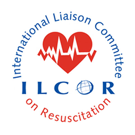10 Steps to Improve in-hospital cardiac arrest quality of care and outcomes - A scientific statement on behalf of the International Liaison Committee on Resuscitation
ILCOR’s vision is to save more lives globally through resuscitation. However, in-hospital cardiac arrest (IHCA) remains a high-risk event among hospitalized patients of all ages worldwide and is associated with high rates of poor patient outcomes, including death.
Despite advances in care, there are still gaps in the prevention of IHCA, how resuscitation teams can be trained and implemented to improve performance, what resources should be available for patients’ post-arrest, and how these outcomes can be measured and quality improvement efforts implemented. There is also a need for more practical steps, which can be implemented in a wide variety of settings, especially in countries with lower resources.
To address a growing need to improve the quality standards for responding to IHCA, a diverse group from ILCOR’s member resuscitation councils and external resuscitation experts and scientists from all over the world has identified 10 steps with the aim to improve resuscitation practice and to lead to better patient outcomes and survival after IHCA globally.
Circulation link
Resuscitation link
The 10 steps identified in this statement represent the consensus of a writing group including more than 30 multidisciplinary experts in the health care field and an external advisory group. This framework can provide health care institutions guidance to assess where gaps in their resuscitation systems for IHCA are, and how those gaps might be systematically approach with evidence-based best practices.
We invite you to participate in a focus group to share your valuable insights
Cardiac arrest in hospitalized patients is a high-risk event with significant morbidity and mortality, prompting the International Liaison Committee on Resuscitation (ILCOR) to identify 10 key steps to improve patient outcomes and survival. These steps focus on enhancing IHCA response through planning, prevention, effective resuscitation training, high-quality care, and continuous evaluation within a person-centered care culture.
We invite you to participate in a focus group to share your valuable insights on implementing these steps to improve in-hospital cardiac arrest outcomes and care quality by clicking the following link.
https://forms.office.com/e/afXvxmn22Z
Contact: support@ilcor.org
COI: The Laerdal Foundation financially supported the development of these 10 Steps to improve IHCA.

